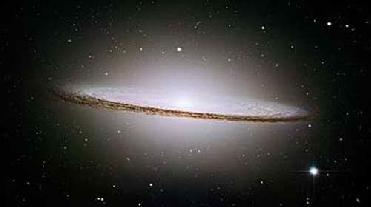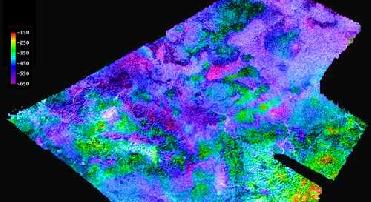
Sombrero Galaxy (M104). NASA image
CANBERRA (BNS): Astronomers from Swinburne University recently found a galactic freak that could be the key in understanding how galaxies and their clusters developed.
Five Australian and three North American astronomers made the discovery, which has been published in the March issue of Monthly Notices of the Royal Astronomical Society.
The astronomers say that the ultra-compact dwarf galaxy, which is the closest found to Earth, is far brighter and more massive than the clusters of stars that usually surround galaxies, and was born in the very early stages of the formation of the universe.
Using the mighty 10-metre Keck II telescope situated on the mountain of Mauna Kea in Hawaii, Swinburne astronomers George Hau and Professor Duncan Forbes discovered the galactic freak, an extremely rare ultra-compact dwarf galaxy. According to a pact signed with the California Institute of Technology in 2008, astronomers from Swinburne have access to the Keck telescopes up to 20 nights per year.
Hau said that while observing the properties of star clusters surrounding the well-known Sombrero Galaxy, they detected this compact object that was far brighter than any of its companions.
“It was only the size of a star cluster, which typically contains about one million stars, but it shone as brightly as a small galaxy. This indicated the object was an ultra-compact dwarf galaxy, a very unusual object, possibly containing 10 million stars,” Hau said.
Swinburne astronomers said that it was a mystery on how such rare phenomena was evolved. They said that the discovery of SUCD1, as the object has been named, has presented the perfect opportunity to find out, and fill in another vital chapter in galactic evolution.
Hau said that there was much debate in the astronomical community about how these things formed. “The prevailing theory is that they are dwarf galaxies that have been stripped of their outer halo of stars by the gravitational forces of the large parent galaxy, leaving only the bright inner core of stars. But we think it may be something else: a massive star cluster that has formed independently,” Hau said.
Astronomers say that another unusual aspect of the ultra-compact dwarf galaxy is that it is very old, perhaps 10 billion years, indicating it was formed in the early stages of the universe, when things were all the more violent and energetic. Furthermore it appears to consist mainly of stars, rather than the still-enigmatic dark matter, which dominates the mass of most galaxies, they said.
“Small it may be, but SUCD1 is hardly peaceful, spitting out a powerful stream of X-rays. The team believes this to be the first time that X-ray emissions have been clearly detected from an ultra-compact dwarf object,” the astronomers said.
Meanwhile, team member Duncan Forbes said that on the basis of available evidence assumption is that SUCD1 is a massive star cluster that evolved on its own – rather than a stripped-down galaxy. However, still debate is on at the moment, Forbes said.
“These are exciting discoveries, and will certainly change the way we think about how ultra-compact dwarf galaxies and related objects form. Of course SUCD1 may be a special case, and obviously we need more examples in order to nail down its origin. At Swinburne we’re in a great position to find more such objects through our access to the Keck telescope. It is an exciting time to be working in this field,” Forbes added.
 Next Article
Next Article













The Indian Air Force, in its flight trials evaluation report submitted before the Defence Ministry l..
view articleAn insight into the Medium Multi-Role Combat Aircraft competition...
view articleSky enthusiasts can now spot the International Space Station (ISS) commanded by Indian-American astr..
view article